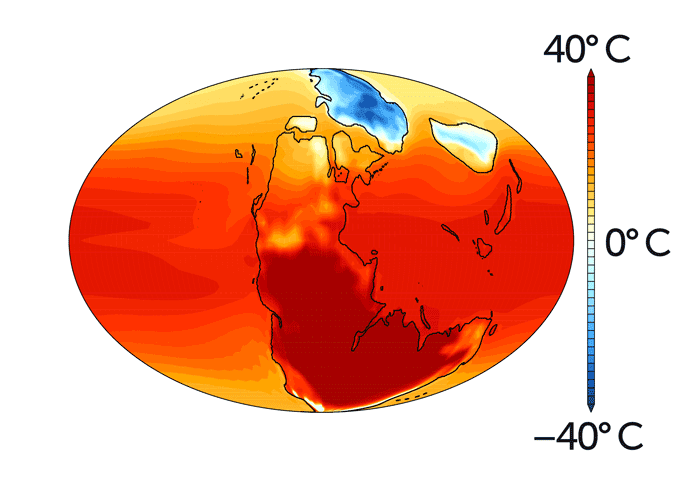The most devastating mass extinction in Earth’s history, known as the end-Permian extinction, may have been caused by an extremely severe El Niño cycle. New research suggests that this climatic event, occurring around 252 million years ago, was initiated by massive volcanic eruptions in Siberia, leading to the catastrophic demise of 90% of Earth’s species.
Researchers have long suspected that an overload of carbon dioxide in the atmosphere due to volcanic eruptions played a key role. The eruption of the Siberian Traps released enormous amounts of carbon dioxide, which exacerbated global warming to unprecedented levels. The volcanoes not only emitted carbon dioxide but also exposed and vaporized extensive coal seams, amplifying the greenhouse effect.
According to Alex Farnsworth, a paleoclimate modeler at the University of Bristol, the stakes are extremely high once we exceed the historical climate boundaries under which life has evolved for millions of years. The geological data suggest that this CO2-induced warming triggered extraordinary and prolonged El Niño events, further destabilizing the climate.
During the lush Permian period, the supercontinent Pangaea featured vibrant ecosystems teeming with diverse life forms. However, the volcanic activity in Siberia threw this habitable world into chaos. Enhanced El Niño events contributed to a series of severe climate swings, including extended droughts, wildfires, and subsequent flooding, rendering the environment inhospitable for most species.
Yadong Sun, an earth scientist at the China University of Geosciences, together with his colleagues, used fossil records of conodont teeth to model ancient ocean temperatures. These records revealed a weakening ocean temperature gradient similar to today’s El Niño patterns. When compounded with the general climate shift due to volcanic emissions, the result was a devastating chain reaction that saw temperatures in tropical oceans rise to lethal levels of 104 degrees Fahrenheit (40 degrees Celsius).

Credit: Alex Farnsworth/University of Bristol
These harsh conditions led to widespread forest die-offs, which compounded the problem by reducing the natural removal of CO2 from the atmosphere. This created a ferocious positive feedback loop driving even greater warming and more severe El Niño events. Terrestrial animals were the first casualties, succumbing to the dire conditions before the reverse pattern—oceanic species following suit—became evident.
In their study, published in the journal Science, Farnsworth and Sun documented that these climatic shifts led to such extreme conditions that species couldn’t merely migrate to cooler regions for refuge because higher latitudes also faced unprecedented temperatures.
The new findings shed light on why this specific mass extinction event was so catastrophic compared to other episodes of global warming in Earth’s history. It underscores the critical role that short-term climate oscillations and extreme weather events can play, particularly when compounded by underlying global warming.
Paleontologist Peter Ward, who was not involved in the study, emphasized the terrifying implications of these findings for present-day climate science. The historical CO2 levels during the Permian were much higher than today’s 419 parts per million, but the current rate of CO2 increase is much faster. This suggests that even a fraction of the disruption that occurred during the Permian period could spell disaster for modern civilizations that rely heavily on climatic stability.
Going forward, researchers aim to further investigate these rapid climate fluctuations through detailed fossil records, such as cave stalactites and tree rings, to provide a deeper understanding of how past life forms coped with such extreme changes. This knowledge could offer crucial insights into the resilience of ecosystems in the face of current and future climate challenges.
